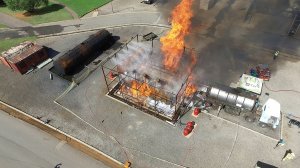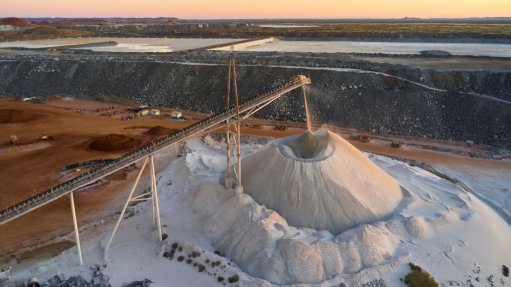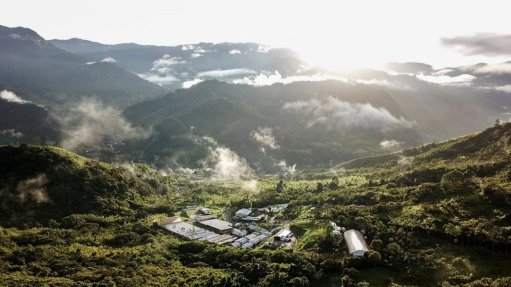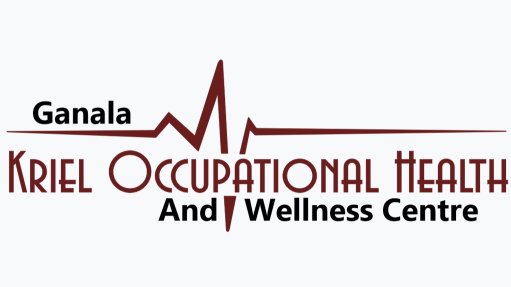Water mist tech sparks industry interest
The use of water mist fire-suppression technologies has been increasing as more land-based applications have been identified and the benefits of such technologies are being realised by industry leaders and experts, says environmental solutions company I-CAT mechanical engineer Jeanri van Tonder.
The general trend shows that interest in water mist technologies has been increasing over the years, with significantly more research and testing being conducted, she adds.
“In my opinion, water mist technology has the potential to become the frontier in fire suppression globally in years to come.”
Van Tonder explains that the size of the water mist droplets makes water mist technology superior to other water-based fire-suppression systems.
A standard sprinkler head generally breaks up a water stream into droplets of about 4 mm in diameter; however, a specialised water-mist nozzle will atomise water into droplet sizes ranging from 50 μm to 1 000 μm.
This may not only increase the cooling capability of water mist by up to 40 times – compared with that of a sprinkler’s water spray for the same volume of water – but also creates an inert atmosphere by instant vaporisation of water mist droplets, which suffocates the fire instantly, Van Tonder adds.
Consequently, a reduction of up to 90% in water consumption can be achieved when using water mist nozzles instead of sprinklers. This also allows for stored pressure water mist systems to be used for a range of applications, even when water is not easily or readily accessible.
Such systems consist of stored pressure cylinders, which contain water and an atomising medium at low pressure, as well as pipework and the water mist nozzles.
“The simplicity of a stored pressure system permits its use in the most remote applications or where space is limited. This makes it more versatile than high-pressure water mist systems,” explains Van Tonder.
The systems can also suppress not only ordinary combustible fires, fuel fires, and cooking oil fires but also electrical fires, as the atomised water droplets result in significantly less water being needed to suppress the fire.
“Water mist systems have been identified as an effective solution to protect valuable electrical equipment against a fire. “The systems have gained public interest because of their significantly smaller water consumption and ability to suppress fires without causing substantial functional damage to equipment.”
Unlike clean agent suppression systems, using water mist systems does not require the enclosure in which it is used to be completely closed, with fire suppression performance of water mist systems being superior in the presence of ventilation compared to clean agent suppression systems. Additionally, there is virtually no clean-up required after the water mist system has discharged as is the case with condensed aerosol suppression systems.
Van Tonder points out that this makes the systems “incredibly versatile”, as they can be used in a variety of applications.
“The reduction in water damage when using water mist systems also allows for high-value items and structures to be protected from a fire while being preserved for future use.”
Lack of Guidance
In South Africa, fire extinguishers and mobile fire-fighting equipment are thoroughly regulated by the Occupational Health and Safety Act, as well as the relevant health and safety standards.
Van Tonder notes that there are also extensive mandatory requirements for the fire protection of buildings, which are listed in SANS 10400-T for various occupancies.
“Ironically, there is especially a lack of guidance for the mitigation of fire risks in the mining and industrial sector, where automatic fire suppression of high-risk equipment – such as conveyors, transformers and fuel storage tanks – are not specified in the regulation.”
She explains that the Mine Health and Safety Act requires an end-user to “take reasonably practicable measures” to mitigate fire hazards in the workplace. The Act also requires that end-users ensure that all personnel are sufficiently protected from injury or death, which may result from a fire.
For this reason, business owners may often adopt standards published by the National Fire Protection Association and Factory Mutual that they consider to be applicable to them.
Van Tonder says water mist fire-suppression system manufacturers will need to actively engage with certification and approval bodies, as this will enable them to identify further applications for water mist, conduct scaled tests and ensure that health and safety standards are more accommodating towards novel fire-suppression technologies in the future.
“It is also up to the original-equipment manufacturers to expose end-users and clients to the endless advantages of using water mist fire-suppression systems.”
Article Enquiry
Email Article
Save Article
Feedback
To advertise email advertising@creamermedia.co.za or click here
Press Office
Announcements
What's On
Subscribe to improve your user experience...
Option 1 (equivalent of R125 a month):
Receive a weekly copy of Creamer Media's Engineering News & Mining Weekly magazine
(print copy for those in South Africa and e-magazine for those outside of South Africa)
Receive daily email newsletters
Access to full search results
Access archive of magazine back copies
Access to Projects in Progress
Access to ONE Research Report of your choice in PDF format
Option 2 (equivalent of R375 a month):
All benefits from Option 1
PLUS
Access to Creamer Media's Research Channel Africa for ALL Research Reports, in PDF format, on various industrial and mining sectors
including Electricity; Water; Energy Transition; Hydrogen; Roads, Rail and Ports; Coal; Gold; Platinum; Battery Metals; etc.
Already a subscriber?
Forgotten your password?
Receive weekly copy of Creamer Media's Engineering News & Mining Weekly magazine (print copy for those in South Africa and e-magazine for those outside of South Africa)
➕
Recieve daily email newsletters
➕
Access to full search results
➕
Access archive of magazine back copies
➕
Access to Projects in Progress
➕
Access to ONE Research Report of your choice in PDF format
RESEARCH CHANNEL AFRICA
R4500 (equivalent of R375 a month)
SUBSCRIBEAll benefits from Option 1
➕
Access to Creamer Media's Research Channel Africa for ALL Research Reports on various industrial and mining sectors, in PDF format, including on:
Electricity
➕
Water
➕
Energy Transition
➕
Hydrogen
➕
Roads, Rail and Ports
➕
Coal
➕
Gold
➕
Platinum
➕
Battery Metals
➕
etc.
Receive all benefits from Option 1 or Option 2 delivered to numerous people at your company
➕
Multiple User names and Passwords for simultaneous log-ins
➕
Intranet integration access to all in your organisation





















